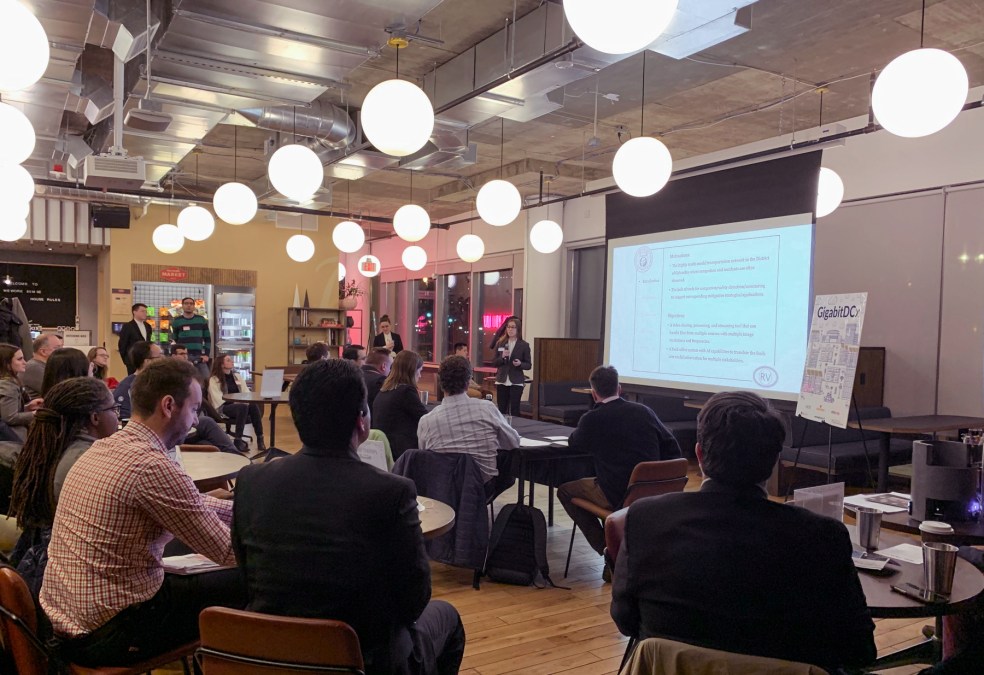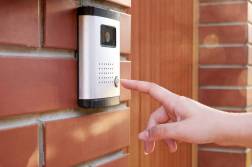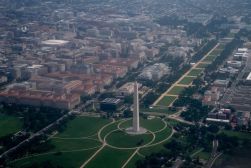D.C. developers present futuristic traffic, environmental apps for civic challenge

Six semifinalists for Washington, D.C.’s GigabitxDC Challenge demoed their products Wednesday night before a panel of judges, competing for an exclusive beta-test license with the D.C. government and a $34,000 cash prize.
The semifinalists, who were narrowed down from 21 original submissions, were invited to present proofs of concept targeting D.C.’s traffic and environmental health problems. The competition, run through Mayor Muriel Bowser’s office and the Office of the Chief Technology Officer, required solutions to incorporate gigabit-speed internet technology in some capacity. That technology, often relying 5G mobile data service, isn’t widely available yet, though some pilots from Sprint and Verizon are looking to change that in the District. As a result, the majority of the proposed solutions were future-focused and not necessarily ready for immediate implementation.
One proposal, though, seemed not to rely on an ultra high-bandwidth connection and could potentially see a faster roll-out. A mobile app called How’s My Driving D.C., born from a Twitter account that helps identify repeat-offenders of D.C. traffic law, would provide users with a quicker way to alert D.C. agencies to its most dangerous drivers and intersections. Daniel Schep, co-creator of the app, told StateScoop the technical integration of the city’s data into his app would be “trivial.”
A team of George Washington University students presented Road Vision, a mobile app that would incorporate various video feeds — from voluntary smartphone users, surveillance cameras and other sources — to provide a more complete understanding of congestion in the city than that currently offered by services like Google Maps or Waze. Users who enter a location would be able to view a live stream near that location along with maps overlaid with traffic data. The team said it would require a 5G connection to function properly, and there is also uncertainty with how the app might integrate with law enforcement agencies seeking video of specific locations.
On the environmental side of the challenge, local Kenneth Walton presented “Corner BOI,” or Corner Body Own Interface, a metal sleeve with a curved screen that could be attached to lightpoles around the city, allowing passersby to monitor for lung and heart disease by running batteries of health tests. Walton said the devices would also involve the use of cryptocurrency and blockchain to improve security and integrity of health data.
Another team presented URADmonitor and the Underwater Wireless Sensory Network, which would measure the quality of air and water, respectively, and transmit that information to the public and the city.
Another environmental proposal called Dynamhex uses game-like elements in a software platform to monitor environmental goals, view metrics on wasted energy and encourage people to reduce energy consumption. The project’s presenter, company co-founder Sunny Sanwar, said he wants to help D.C. reach its goal of reaching 100 percent renewable energy by 2032.
One or two winning solutions will be announced next week. A single winner would take a $34,000 cash prize or two winners would split it. The award is funded through US Ignite’s Smart Gigabit Communities program.






